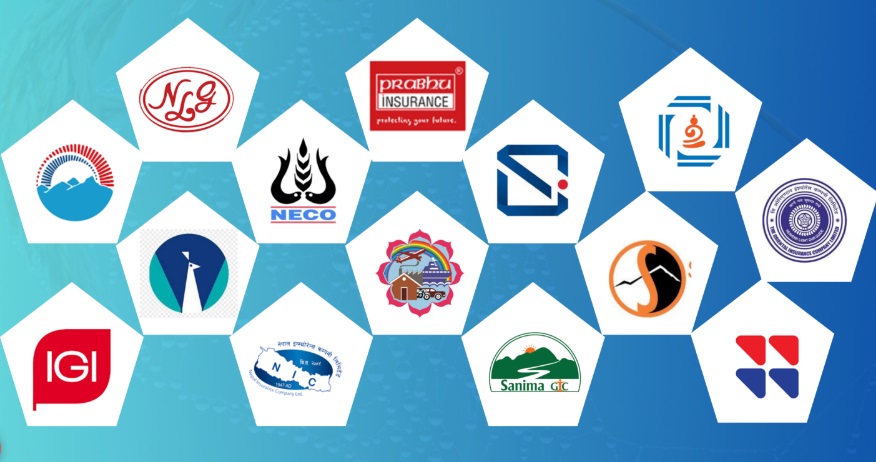Kathmandu. The number of insurance companies has shrunk to 28 under the pressure and pretext of capital increase. After the old companies shrunk, a total of 35 licensed insurance companies are now in existence, including 7 micro-insurance companies brought in to expand micro-insurance. In addition, there are two more reinsurance companies.
Apart from reinsurance companies, life insurance companies, non-life insurance companies, and micro-insurance companies also have their own representative associations. The specific objective of all three associations of these three types of insurers is to protect the interests of the insurers and create pressure at the policy level for policy reforms or changes or facilitation. Although the organizations have the same objectives and are regulated by the same regulator, the organization is different, the working committee is different, and the activities are different.
While three separate organizations of a total of 35 organizations exist, there is no strong representation on behalf of the insurer in the body that should be represented. When non-life insurance is included, life and small insurance are left out, when life insurance is included, non-life and small insurance are left out, and when small insurance is included, the representation of the remaining two insurers is lost.
The number of members of the Small Insurance Association is only 7. It is also very small in terms of numbers. Moreover, there is no doubt that it is a very weak organization in terms of means and resources. Due to the constraint of trading within a limited scope of small capital and large insurers, the member insurers of this organization are not in a position to raise sufficient resources for the association.
14-14 organizations are also affiliated with the Life Insurance Association and the Non-Life Insurance Association. Membership fees and interest income from the revolving fund alone are not always enough to meet the funds required by those organizations to regularly operate the activities of the association, to assume institutional social responsibility, and to organize national or international level meetings and conferences. There is also a compelling situation where additional funds have to be collected from member insurers as contributions for organizing programs every time.
Insurance companies, which act as trustees for the insured, are not a place for politics. It seems that this can be effective when all three organizations are integrated and able to conduct organizational activities under a single common leadership. There will be a comparatively small burden for contributions towards membership fees. With a large number of members, it will also be easier to gather the necessary resources and expertise for large-scale international programs.
Since the nature of the business of non-life, life and micro insurance is different, the argument has also been put forward that the representation should also be different. Here can be an easy and proven solution. Separate committees can be formed within the integrated organization to ensure objective representation and separate representation of all three types of insurers can be ensured by forming a non-life insurance committee for the benefit of non-life insurers, a life insurance committee for life insurers, and a small insurance committee for small insurers.
Positraj Poudel, President of the Life Insurance Association of Nepal and Chief Executive Officer (CEO) of Citizen Life Insurance, said that it is natural for companies doing different insurance business to have their own separate organizations. ‘It would not make any difference if all types of insurance companies were to form a single organization,’ he said, ‘but it would be easier to have separate organizations to move forward with their agendas according to the business.’
Poudel said that if a single organization is formed and the officials of life, non-life and micro insurance are present in the working committee, it could lead to confusion when the regulator goes to express its views or presents the agenda. ‘There are different organizations in other sectors according to their nature,’ he said, ‘that is why a separate organization has been established in the insurance sector according to its nature.’
Chunki Kshetra, the outgoing president of the Nepal Insurance Association and the Chief Executive Officer (CEO) of Sagarmatha Lumbini Insurance Company, said that earlier, when there were few insurance companies, there was one organization for both life and non-life. ‘At that time, the president of the organization was taken by the CEOs of life and non-life insurance companies in turn, and the two vice-presidents were represented by one life and one non-life,’ he said. ‘Later, as there were many companies, the organization also became separate.’
Chhetri says that it is possible to move forward by forming a single organization and representing them as before. ‘However, I don’t think there was any talk of forming a single organization,’ he said. ‘Small insurers can be affiliated with the life and non-life insurance organizations based on the nature of their business. They had to come prepared.’
Naresh Kumar Roka, secretary of the Nepal Small Insurance Association and CEO of Protective Micro Insurance, said that it was easy to raise their issues because the organization was formed according to the nature of the insurance business. ‘Initially, we had thought of merging small non-life insurers into a non-life insurers’ organization and small life insurers into a life insurers’ organization, we had discussions, but it didn’t happen,’ he said. ‘That’s why we formed a single organization for life and small non-life insurers.’
Roka says that having one organization for all insurers would give them the strength to raise similar issues. ‘However, having separate organizations makes it easier to move forward according to the nature of their respective businesses,’ he said. ‘That’s probably why there has been no talk of forming a single organization so far.’






















